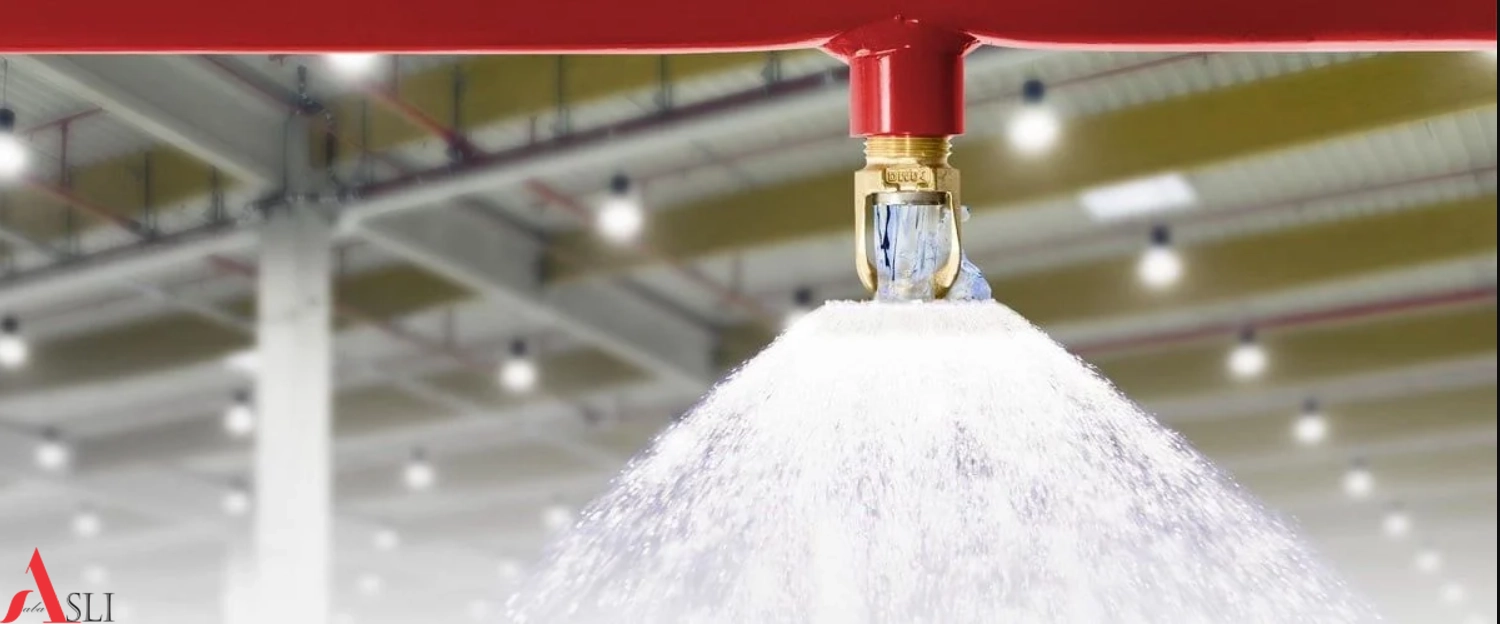In less than 30 seconds, a small flame can escalate into a large fire that destroys a home and endangers the lives of its occupants. Even if individuals manage to escape, a fire can inflict financial damages ranging from tens to hundreds of thousands of tomans. What is particularly concerning is that house fires have become increasingly dangerous and destructive due to the flammability of common household materials. Recent studies indicate that, thirty years ago, individuals had an average of 14 to 17 minutes to evacuate a house fire. Today, however, with the prevalence of synthetic materials in homes, residents have only about 2 to 3 minutes to escape.
Fire tests indicate that a house furnished predominantly with synthetic materials can be completely engulfed in flames in less than four minutes. Research conducted by the National Institute of Standards and Technology (NIST) reveals that modern homes and their furnishings ignite more rapidly than older materials, significantly diminishing the time available for occupants to escape a house fire. This phenomenon is attributed to the increased prevalence of synthetic materials and open floor plans, which facilitate faster fire spread and shorter escape times. What occurs in the initial minutes of a fire that transforms it from manageable to uncontrollable? What precautions should be implemented during that critical period between a controllable fire and one that has spiraled out of control? How can we enhance our safety and response during this crucial time? What role do fire extinguishing systems play in these moments? To ensure the safety of all individuals in the event of a fire, it is essential to have a functioning fire alarm system and a well-rehearsed escape plan.
Actions after fire
After a fire has occurred, the most crucial factor is the speed of response. Fires can spread rapidly, and there may not be enough time to make a phone call. Therefore, if you observe a fire, immediately contact the fire department or emergency services and provide detailed information about the fire’s location and its nature.
Then you can do the following steps:
- In the next step, you must quickly direct all the people inside the building to the outside.
- After that, you should immediately turn off the electricity meter and turn off the ventilation of the building to prevent excess oxygen from entering the fire area.
- When escaping the building, before exiting the rooms, first touch the captured door so you don’t get hot. If the handle is hot, you should use another outlet.
- If you did not manage to leave the building, get to a room with a window and close the door. Then cover the door with a blanket or carpet so that the smoke does not enter the desired room. Wait in the same room for the firemen to reach you.
- If your clothes are on fire, cover your face with your hands and then roll on the ground.
- Do not enter a burning building unless you are equipped with fireproof clothing or a breathing mask.
- You should not forget that one of the most dangerous factors in fire accidents is the smoke and toxic gases produced by the fire, not the fire itself and its flames. Breathing air with a very high temperature during a fire can also cause burning of the lungs.
Fire extinguishing systems and equipment
The automatic fire extinguishing system is designed to control and extinguish the fire automatically. To stop the spread of the fire in the first minutes of the fire and before the fire goes to other places and then extinguish the fire. This system works completely automatically and does not require human intervention to be activated. This system has different types according to the number of floors and the number of units and the type of building.
Types of fire extinguishing systems
1. Sprinkler system
Sprinklers are sensitive to heat, and in case of fire, when the temperature rises above the specified limit of the sprinkler, the inner bubble of the sprinkler explodes and water falls on the fire under pressure. The reason for the explosion of the glass sprinkler bubble is because of the liquid inside it. This liquid, which is mercury, begins to expand against the heat of the environment. When the volume inside the bubble is filled with the expansion of mercury, the pressure it puts on the bubble causes the bubble to break, and the water behind the bubble inside the pipe It is sprayed on the fire with pressure.
Many people think that when the fire extinguishing system is activated in the area where the fire occurred, all the sprinklers in the building are activated and cause the damage to increase, but this is not correct. Only the sprinklers that are around the fire are activated in case of fire and the rest They are not activated when the fire does not spread to that place, and this causes the damage to be minimized.
Sprinkler components:
- Pump pressure supply system
- Distribution pipes
- Connections
- Valves
- sprinkler
2. Aerocel system
This extinguishing system is a type of gas extinguisher that utilizes nitrogen. The substances are stored in containers and released through pipes and nozzles when a fire is detected. The agent in this system works by restricting the oxygen available to the fire. It is specifically designed for enclosed spaces, such as engine rooms and server facilities. The aerosol extinguishing agent can be in the form of powder or gas, and it extinguishes fires by disrupting the chemical reaction that sustains combustion. This gas-based fire extinguishing system employs fine mist and gas particles to suppress flames. Common gases used in these systems include nitrogen, carbon dioxide, and argon. Frequently used powders consist of potassium bicarbonate, sodium bicarbonate, and monoammonium phosphate. Aerosols are particularly effective in hard-to-reach areas and environments where water-based extinguishers may not be suitable. By heating a solid composition, aerosol mists release a gas that can lower the oxygen levels in the environment, effectively extinguishing the fire. The Aerocel system is ideal for environments where water systems could cause damage and losses. Reason: Improved clarity, vocabulary, and technical accuracy while maintaining the original meaning.
3. Gas fire extinguishing system during fire
In a gas fire extinguishing system, the gas is stored in liquid form within specialized chambers. When a fire ignites, the gas is released upon activation of the system. Inert gases, such as nitrogen, Inergen, and argonite, serve as effective fire suppressants. Gas systems extinguish fires by displacing oxygen in the surrounding environment. This ceiling-mounted fire extinguishing system is designed for areas containing valuable and sensitive equipment, making it particularly suitable for environments with electronic devices.
4. Foam fire extinguishing system
The firefighting foam concentrate is mixed with water in the system to create a foam solution, which is then discharged through the pipes. By forming a layer of foam over the burning material, this system cools the flames and extinguishes the fire. Foam extinguishers are effective for fires involving gasoline, diesel, and oil. They are also suitable for fires caused by burning electrical equipment.
The role of the fire extinguishing system during a fire
As one of the most critical aspects of safety in various environments, fire extinguishing is regarded as a fundamental priority in numerous buildings and industries worldwide. Given that fires can ignite rapidly and cause devastating effects—including harm to human life and health, as well as significant financial losses—the implementation of diverse fire extinguishing systems is proposed as an essential solution to manage and mitigate this hazardous phenomenon. Typically, all types of fire extinguishing systems play a crucial role in safeguarding property and individuals from fire hazards. The timely activation of these systems minimizes injuries and damages. For this reason, it is imperative to install these systems in buildings and locations with a high risk of fire and ignition. This proactive approach can significantly reduce or prevent financial and life-threatening risks. Controlling a fire in its initial moments is vital to preventing its escalation and spread. During this critical time, fire extinguishing systems are instrumental in alerting occupants to the danger and providing them with the necessary time to evacuate safely. Therefore, we will explore the various firefighting equipment available within fire extinguishing systems. You can get all the equipment of the fire extinguishing system from the production company of Manasanat Paydar.
last word
In general, the critical window for escaping a house fire after it ignites is approximately 2 minutes. After this time, it becomes increasingly difficult, and often impossible, to exit the building safely. Installing a fire alarm system can alert occupants to the presence of a fire in under 1 minute, allowing for a quicker response. Additionally, having handheld fire extinguishers readily available can enable individuals to combat small fires effectively. Furthermore, the installation of automatic fire suppression systems can control and extinguish a fire in less than 1 minute, enhancing safety and minimizing damage.






